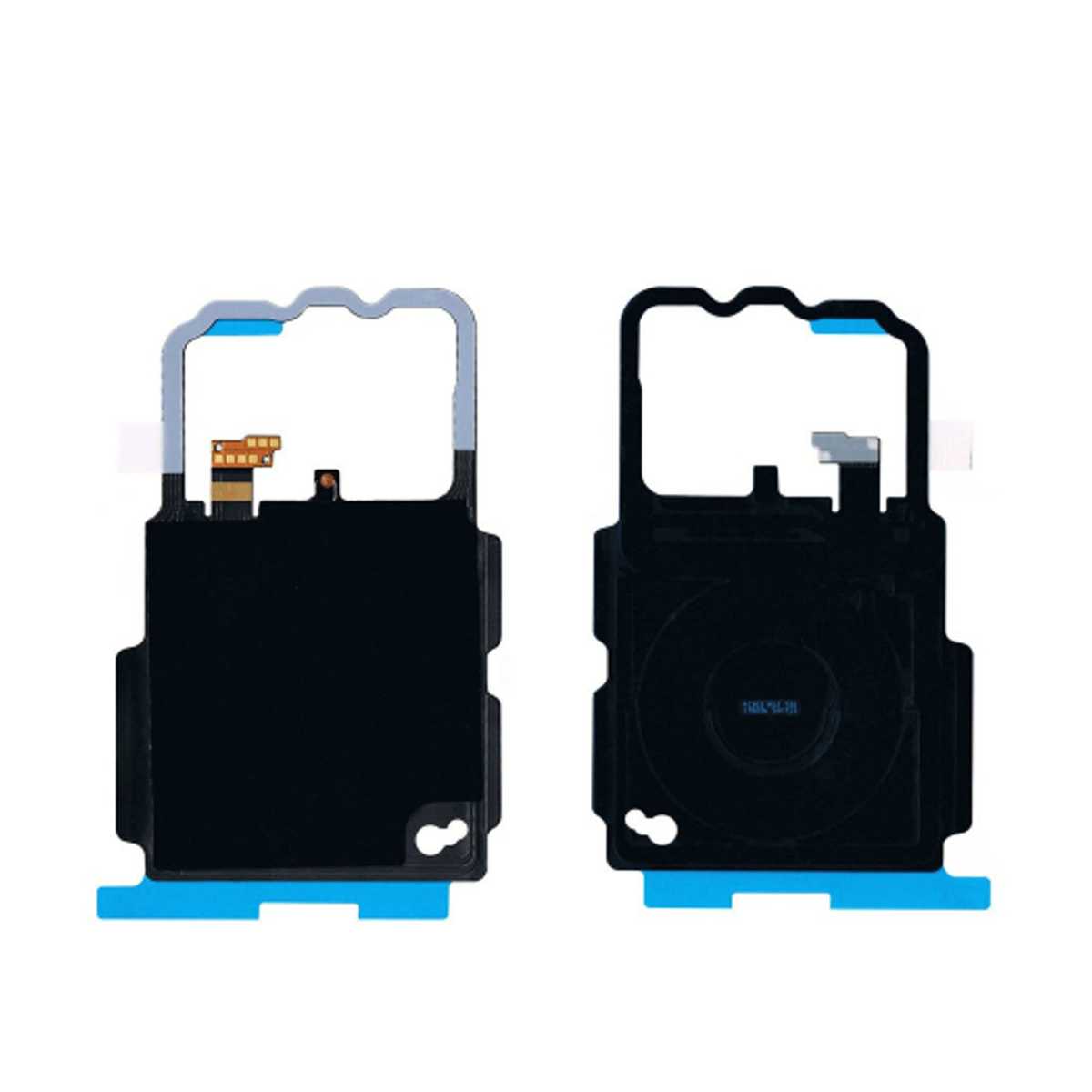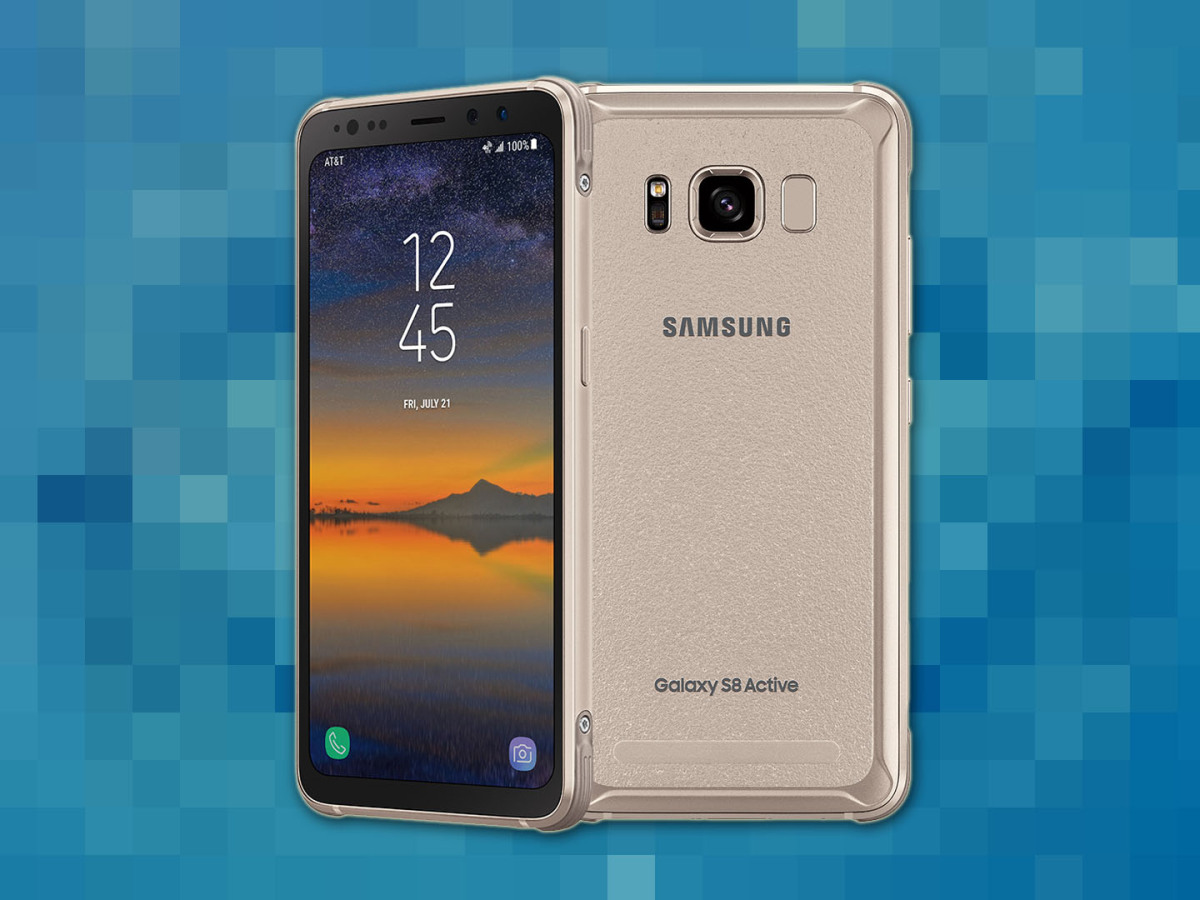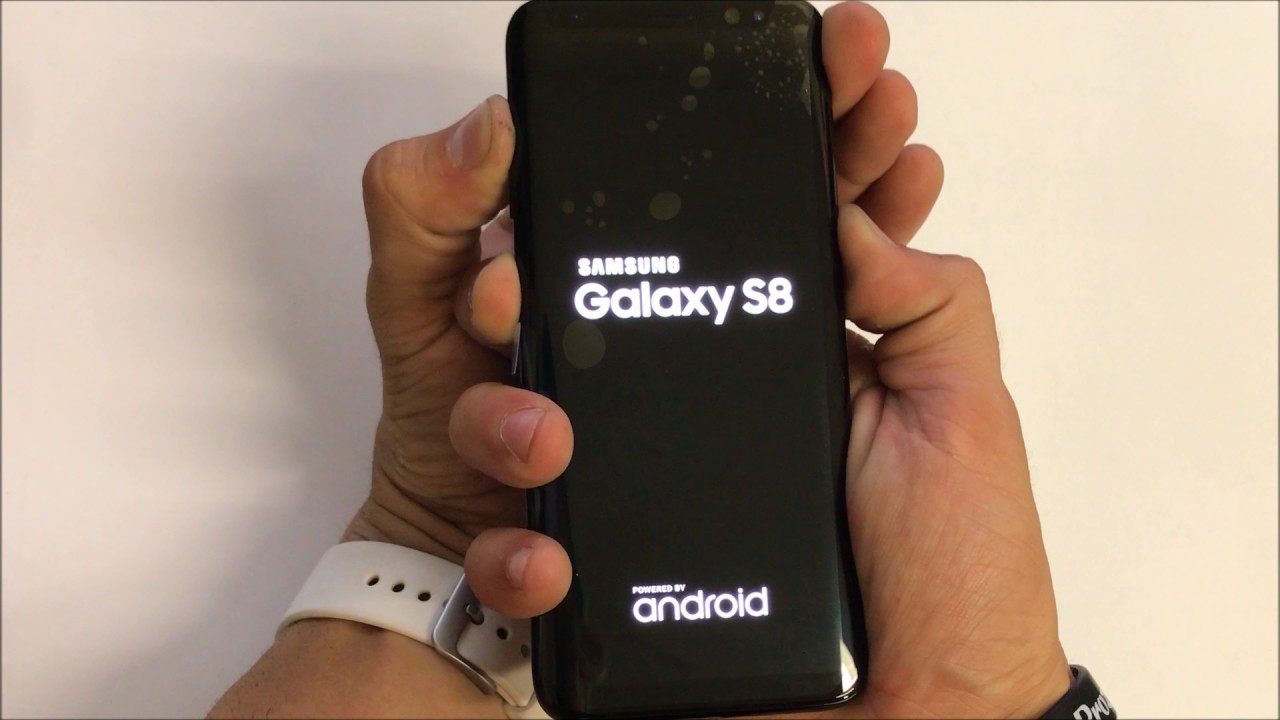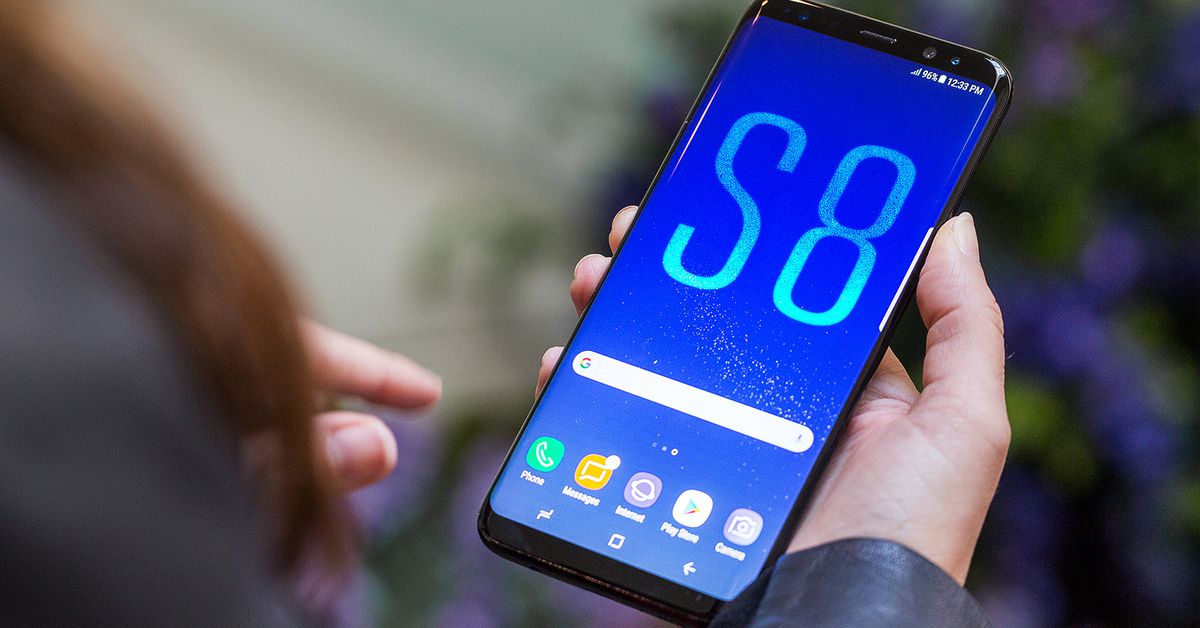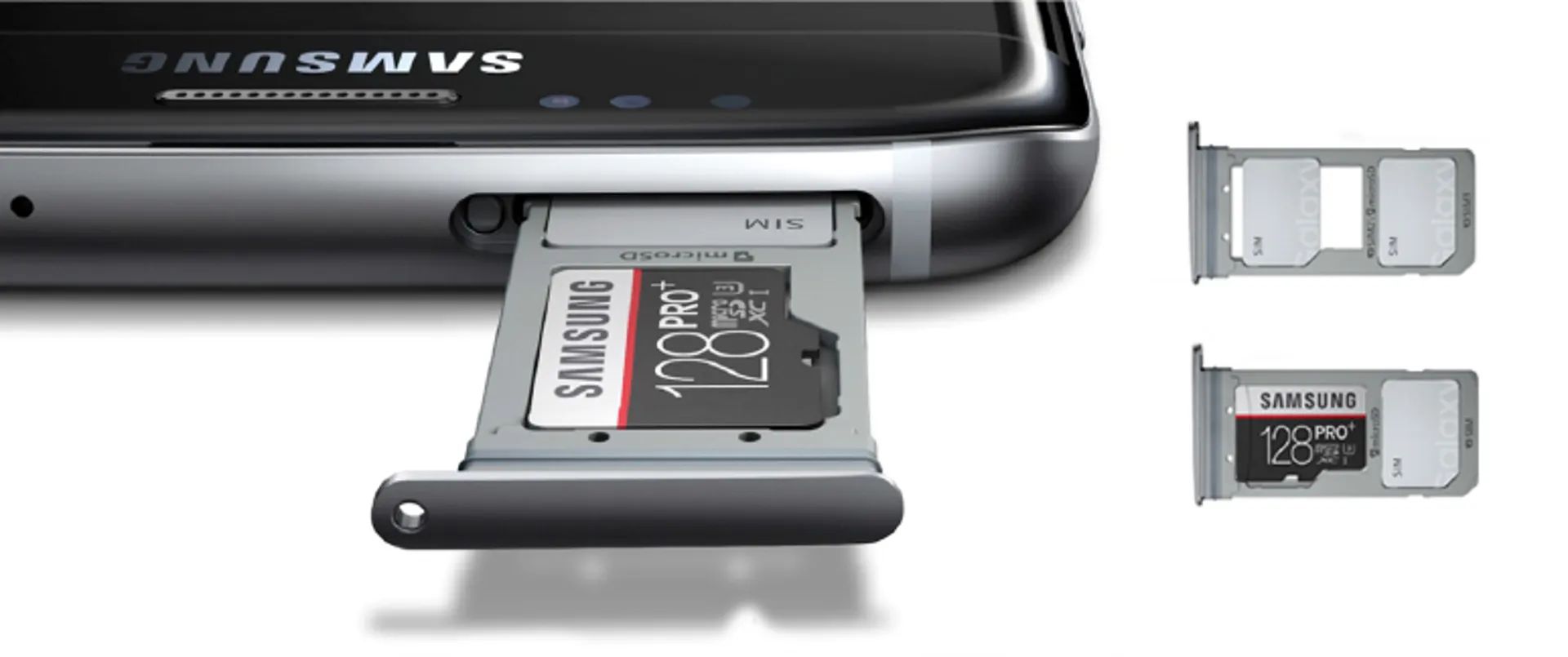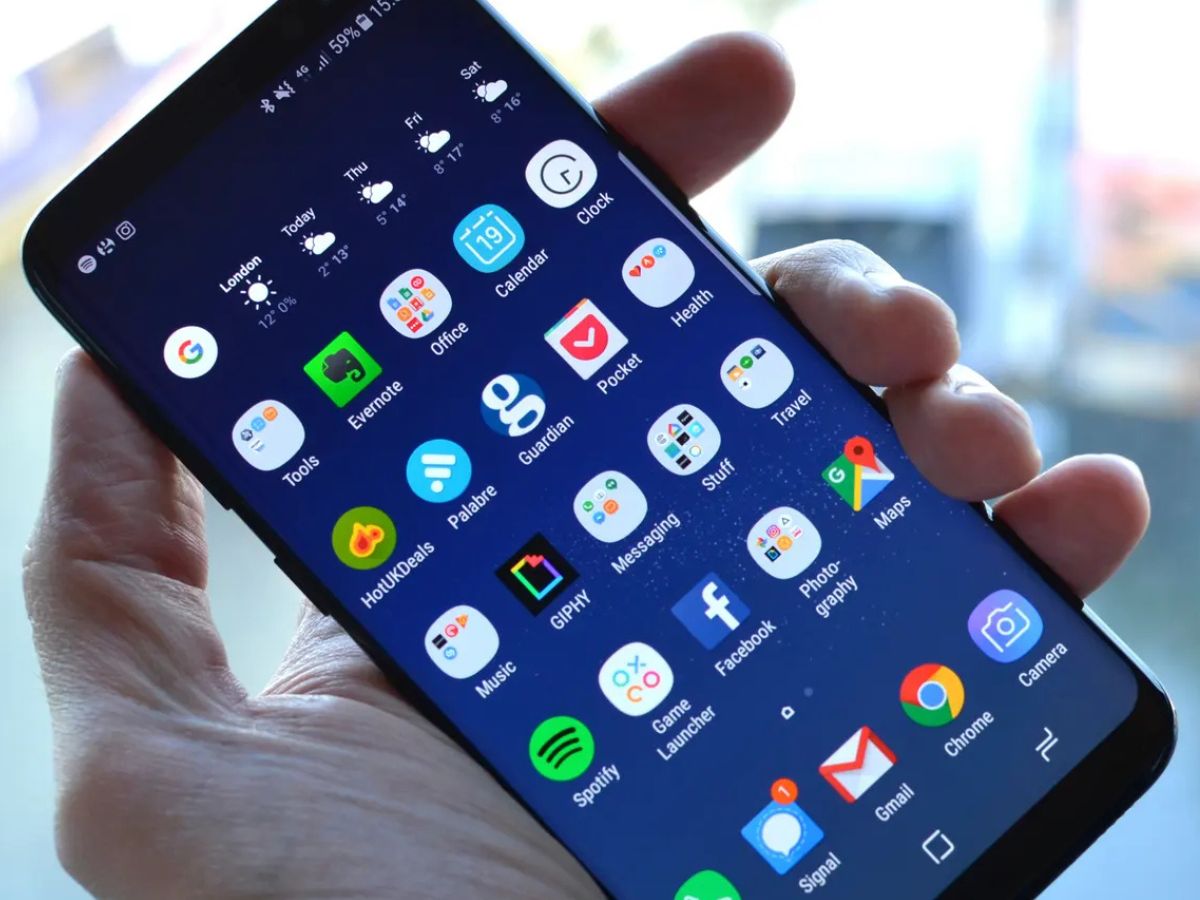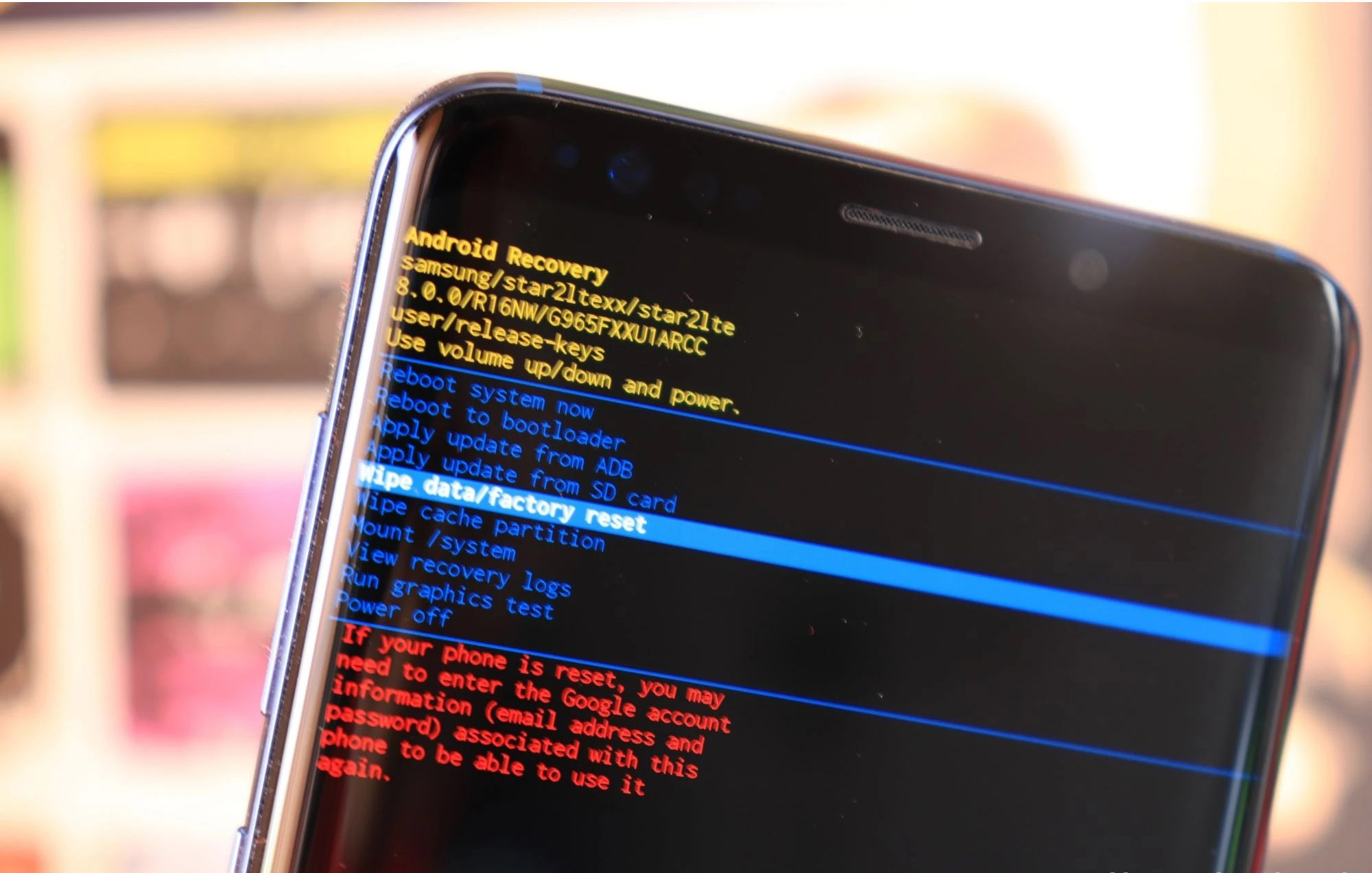Introduction
Near Field Communication (NFC) technology has become an essential feature in modern smartphones, offering users a convenient and secure way to transmit data wirelessly. Samsung, a leading smartphone manufacturer, has integrated NFC into its flagship devices, including the Samsung S8. But what exactly is NFC and why is it important?
NFC is a short-range wireless communication technology that allows devices to communicate with each other by simply touching them together or bringing them into close proximity. It enables quick and effortless transfer of various types of information, such as contact details, website links, payment transactions, and more. It operates on radio frequency identification (RFID) and electromagnetic field principles.
The importance of NFC lies in its ability to simplify our daily lives. With NFC-enabled devices like the Samsung S8, we can now perform a range of tasks with a single tap or touch. This technology eliminates the need for physical exchange of information, such as sharing business cards or manually typing in website addresses. It offers convenience, speed, and enhanced security.
In the following sections, we will delve deeper into the NFC capabilities of the Samsung S8, exploring how it works, how to use it, its benefits, limitations, and various use cases.
What Is NFC?
Near Field Communication (NFC) is a wireless communication technology that allows two devices to exchange data when they are brought into close proximity or touched together. It is a short-range communication method that operates on the principles of radio frequency identification (RFID) and electromagnetic field induction.
NFC technology enables devices to communicate and share information seamlessly. It works by using electromagnetic fields to create a wireless connection between the devices. Unlike Bluetooth or Wi-Fi, NFC operates over short distances, typically within a few centimeters. This close proximity requirement ensures that the communication is secure and limits interference from other devices.
With NFC, data can be transmitted and received in various formats, such as text, images, videos, audio files, and even contactless payment transactions. The technology employs a set of standards and protocols that allow for interoperability between different devices, ensuring compatibility and ease of use.
One of the key features of NFC is its ability to support two modes of operation: active and passive. In active mode, both devices generate an electromagnetic field and can send and receive data. This mode is commonly used for device-to-device communication. In passive mode, one device generates the electromagnetic field and the other device only receives data. This mode is typically used for applications like contactless payment systems, where the user’s device acts as the reader or scanner.
NFC technology is widely used in various industries and applications. It is commonly found in smartphones, tablets, smartwatches, and other portable devices, making it a versatile and accessible communication method. Its applications range from simple tasks like sharing contact information, URLs, and files, to more complex functionalities like mobile payments, access control systems, and public transportation ticketing.
Overall, NFC is a powerful technology that simplifies the way we exchange information and conduct transactions. Its ease of use, convenience, and security make it a valuable feature in modern smartphones like the Samsung S8.
Why Is NFC Important?
Near Field Communication (NFC) has gained significant importance and popularity in recent years due to its numerous advantages and widespread applications. Let’s explore why NFC is such a crucial technology:
- Convenience: NFC simplifies our daily tasks by enabling quick and seamless data exchange. With just a tap or touch, we can transfer information, make payments, authenticate devices, and more. It eliminates the need for cumbersome cables or manual input, saving time and effort.
- Speed: NFC provides fast data transfer speeds, allowing for instant communication between devices. It is ideal for sharing business cards, transferring files, or making contactless payments, as it ensures swift and efficient transactions with minimal delay.
- Security: NFC incorporates robust security measures, ensuring secure data transmission and protecting against unauthorized access. It employs encryption and authentication protocols to safeguard sensitive information, making it a reliable technology for contactless payments, access control systems, and other secure applications.
- Compatibility: NFC is a globally recognized standard, ensuring interoperability between different devices and platforms. It is compatible with a wide range of devices, including smartphones, tablets, and wearable devices. This compatibility enhances its accessibility and usability in various contexts.
- Versatility: NFC offers a wide range of applications and use cases beyond just contactless payments. It can be used for access control systems, transportation ticketing, loyalty program management, smart home automation, healthcare applications, and more. This versatility makes NFC a valuable technology with endless possibilities.
- Integration with other technologies: NFC can seamlessly integrate with other technologies like Bluetooth and Wi-Fi, allowing for enhanced functionalities. For example, NFC can be used to quickly establish a Bluetooth connection or configure Wi-Fi settings by simply tapping two devices together.
Overall, NFC is important because it simplifies our lives, offers fast and secure data transfer, ensures compatibility, and provides versatility in various applications. Its seamless integration with other technologies further enhances its capabilities, making it an indispensable feature in modern devices like the Samsung S8.
NFC in Samsung S8
The Samsung S8 is equipped with NFC technology, allowing users to take advantage of its various functionalities and applications. NFC has become a standard feature in smartphones, and Samsung has ensured its integration into their flagship devices.
The inclusion of NFC in the Samsung S8 allows users to tap their device to other NFC-enabled devices or tags to initiate actions or transfer data. This functionality opens up a world of possibilities and enhances the overall user experience.
In the Samsung S8, NFC is seamlessly integrated with other features and technologies to provide a comprehensive user experience. For example, NFC can be used to quickly and easily pair the device with compatible Bluetooth accessories, such as headphones or speakers. By simply tapping the Samsung S8 to an NFC-enabled accessory, the pairing process is initiated, saving time and eliminating the need for manual configuration.
Another important use of NFC in the Samsung S8 is for contactless payments. Samsung Pay, the mobile payment service provided by Samsung, makes use of NFC technology to enable secure and convenient transactions. Users can add their credit or debit cards to Samsung Pay and make payments by simply tapping their Samsung S8 on a contactless payment terminal. This feature eliminates the need to carry physical cards and enhances the security of transactions.
Furthermore, the Samsung S8’s NFC capabilities extend to other applications and services. Users can share files, photos, and videos with other NFC-enabled devices by bringing them into close proximity. This feature simplifies sharing and eliminates the need for other data transfer methods like Bluetooth or Wi-Fi Direct.
NFC also plays a significant role in other aspects of the Samsung S8’s functionality. It can be used for device pairing with compatible accessories, connecting to wireless speakers, creating smart tags for various tasks, accessing public transportation systems, and much more.
The integration of NFC technology in the Samsung S8 expands the device’s capabilities and provides users with a seamless and convenient experience. Whether it’s for contactless payments, file sharing, or device pairing, NFC enhances the overall functionality and usability of the Samsung S8, making it a versatile and powerful smartphone.
How Does NFC Work in Samsung S8?
The NFC technology in the Samsung S8 works through a combination of hardware and software components that enable seamless communication and data transfer. Let’s take a closer look at how NFC works in the Samsung S8:
1. NFC Hardware: The Samsung S8 is equipped with an NFC chip, which is responsible for generating and detecting the electromagnetic field necessary for communication. This chip allows the device to emit an NFC signal and capture signals from other NFC-enabled devices or tags.
2. NFC Software: The Samsung S8 runs on the Android operating system, which includes an NFC software stack. This software stack enables the device to manage NFC operations, handle NFC protocols, and support various NFC functionalities.
3. Initiating NFC Communication: To start an NFC transaction, the user needs to bring their Samsung S8 in close proximity to another NFC-enabled device or an NFC tag. This could be another smartphone, a contactless payment terminal, a compatible accessory, or an NFC tag embedded in a poster, product, or label.
4. Electromagnetic Field Induction: When the Samsung S8 is brought near an NFC-enabled device or tag, an electromagnetic field is created. The NFC chip in the Samsung S8 generates this electromagnetic field, which induces an electric current in the receiving device or tag.
5. Data Transfer: Once the electromagnetic field is established, data transfer between the Samsung S8 and the other NFC-enabled device or tag can occur. This data transfer can include contact information, website URLs, files, or payment information, depending on the specific NFC use case.
6. Security and Encryption: NFC transactions on the Samsung S8 are secured through encryption and authentication protocols. This ensures that the data being transmitted is protected from unauthorized access and maintains the privacy and security of the user’s information.
7. Configurable Settings: The Samsung S8 allows users to configure NFC settings through their device’s settings menu. Users can enable or disable NFC, manage NFC-related apps, and configure default actions for specific NFC scenarios, such as tapping to share files or making payments.
Overall, NFC in the Samsung S8 works by creating an electromagnetic field that facilitates communication and data transfer between devices. The integration of dedicated NFC hardware and software components in the Samsung S8 ensures a seamless and secure NFC experience for users, enabling a wide range of functionalities and applications.
How to Use NFC on Samsung S8
The Samsung S8 provides users with a simple and intuitive way to make use of NFC technology. Here is a step-by-step guide on how to use NFC on the Samsung S8:
1. Enable NFC: To start using NFC on your Samsung S8, you first need to ensure that NFC is enabled. Go to the device’s Settings menu, locate the “Connections” or “Wireless & Networks” section, and toggle the NFC option to the “On” position. This will activate the NFC feature on your device.
2. Perform Actions: Once NFC is enabled, you can use it to perform a variety of actions and tasks. Here are some common use cases:
- Contactless Payments: To make a contactless payment using NFC on your Samsung S8, add your credit or debit card information to a supported payment app like Samsung Pay. Then, simply hold your device near a compatible contactless payment terminal, authenticate the transaction, and complete the payment.
- File/Data Transfer: You can use NFC to transfer files or data between two NFC-enabled devices. To do this, ensure that NFC is enabled on both devices. Then, select the file(s) or data you want to share, and bring the devices together, ensuring the NFC antennas are in close proximity. Follow the prompts on the screen to complete the transfer.
- Pairing Devices: NFC can also facilitate quick and easy device pairing. For example, to pair your Samsung S8 with a compatible Bluetooth accessory, such as wireless headphones, simply tap the device to the Samsung S8. The NFC technology will initiate the pairing process, allowing you to connect the devices without the need for manual configuration.
- Accessing Tags: NFC tags are small stickers or labels embedded with NFC chips. They can trigger specific actions when tapped with an NFC-enabled device. To use NFC tags with your Samsung S8, simply tap your device to the NFC tag, and it will automatically launch the associated action or app. This can include things like launching a website, turning on Wi-Fi, or setting an alarm.
3. Configure NFC Settings: The Samsung S8 allows you to customize and configure its NFC settings based on your preferences. Go to the device’s Settings menu, select “Connections” or “Wireless & Networks,” and tap on the NFC option. From here, you can manage default actions for specific NFC scenarios, control app permissions, and adjust other related settings.
By following these steps, you can easily use NFC on your Samsung S8 to perform a range of tasks, including contactless payments, file transfer, device pairing, and interacting with NFC tags. The Samsung S8’s intuitive interface and seamless integration of NFC technology make it a convenient and versatile tool for various NFC use cases.
Benefits of NFC on Samsung S8
The integration of Near Field Communication (NFC) technology in the Samsung S8 offers users a multitude of benefits and enhances their overall smartphone experience. Here are some key advantages of NFC on the Samsung S8:
- Convenience: NFC technology on the Samsung S8 enables convenient and effortless communication and data transfer. Users can perform a range of tasks, such as making contactless payments, sharing files, and pairing devices, with just a tap or touch.
- Contactless Payments: Samsung Pay, which utilizes NFC technology, allows users to make secure and contactless payments with their Samsung S8. This feature eliminates the need to carry physical cards, offering convenience and speeding up the checkout process.
- Fast Data Transfer: NFC enables fast data transfer between NFC-enabled devices. With the Samsung S8, users can quickly share files, photos, and videos with other devices by simply bringing them into close proximity. This feature saves time and eliminates the need for cables or manual pairing processes.
- Secure Transactions: The Samsung S8 employs encryption and authentication protocols to ensure secure NFC transactions. Whether it’s making contactless payments or transferring sensitive data, NFC on the Samsung S8 provides a secure platform that protects user information from unauthorized access.
- Device Pairing: NFC simplifies the process of pairing devices. With the Samsung S8, users can easily connect their device to compatible accessories, such as headphones or speakers, by simply tapping them together. This feature eliminates the need for manual configuration and enhances the user experience.
- Compatibility: NFC technology is widely adopted and supported by various devices and platforms. The Samsung S8’s NFC capabilities ensure compatibility with other NFC-enabled devices, allowing for seamless communication and collaboration.
- Versatility: NFC on the Samsung S8 offers a wide range of applications and use cases, beyond just payments and file sharing. Users can use NFC for access control systems, transportation ticketing, loyalty programs, and more. This versatility enhances the device’s capabilities and provides users with endless possibilities.
The benefits of NFC on the Samsung S8 greatly enhance user convenience, security, and efficiency. Whether it’s making payments, transferring data, pairing devices, or accessing various services, NFC on the Samsung S8 adds tremendous value and makes everyday tasks easier and more enjoyable.
Limitations of NFC on Samsung S8
While Near Field Communication (NFC) technology on the Samsung S8 offers numerous benefits, it also comes with a few limitations. Here are some important considerations regarding the limitations of NFC on the Samsung S8:
- Short Range: NFC operates on a short-range communication principle, typically within a few centimeters. This limitation means that devices need to be in close proximity for NFC communication to occur. Users must ensure that the NFC antennas of their Samsung S8 and the other NFC-enabled device or tag are in close alignment.
- Dependence on Compatible Devices: One of the limitations of NFC is its dependence on compatible devices or tags. Both devices must have NFC functionality for data transfer or communication to take place. If the device or tag does not support NFC, the functionality cannot be utilized.
- Power Requirements: NFC requires power to function properly. While passive NFC devices (e.g., NFC tags) don’t require a power source, active NFC devices (e.g., smartphones) must have a power source to generate the necessary electromagnetic field for communication. Therefore, the NFC feature on the Samsung S8 consumes some battery power.
- Data Transfer Speed: Although NFC provides fast data transfer within its short range, it may not be as fast as other wireless technologies like Wi-Fi or Bluetooth for large file transfers. Users may experience slower transfer speeds when using NFC compared to these alternative methods.
- Compatibility with Older Devices: While NFC is becoming increasingly prevalent, older devices may not support NFC technology. As a result, NFC on the Samsung S8 may not be compatible with all devices or tags, limiting its functionality and potential use cases.
- Security Concerns: While NFC transactions on the Samsung S8 are generally secure, there is a potential for security risks if proper precautions are not taken. Users should be cautious when making NFC payments or sharing sensitive information to avoid unauthorized access or data breaches.
Despite these limitations, NFC on the Samsung S8 remains a valuable feature that offers numerous benefits and possibilities. By understanding and addressing these limitations, users can make the most of NFC and ensure a smooth and secure experience on their Samsung S8.
NFC Use Cases on Samsung S8
The NFC technology integrated into the Samsung S8 opens up a range of use cases and applications that enhance the functionality and convenience of the device. Let’s explore some of the key NFC use cases on the Samsung S8:
- Contactless Payments: Samsung Pay, with its NFC capabilities, allows users to make contactless payments by simply tapping their Samsung S8 on compatible payment terminals. This use case eliminates the need to carry physical cards and provides a convenient and secure payment solution.
- File Transfer: NFC enables users to easily share files, photos, and other data with other NFC-enabled devices. By bringing their Samsung S8 in close proximity to another device, users can initiate the transfer quickly and wirelessly, making it convenient for sharing information with colleagues, friends, or family.
- Device Pairing: NFC simplifies the process of pairing the Samsung S8 with compatible accessories. Users can easily connect their device to Bluetooth headphones, speakers, or other devices by simply tapping them together. This use case eliminates the need for manual configuration and streamlines the pairing process.
- Access Control and Security: NFC can be used for access control systems, allowing users to tap their Samsung S8 on NFC-enabled keycards or readers. This use case is commonly found in workplaces or residential complexes, providing a secure and convenient method for granting access to authorized individuals.
- Ticketing and Public Transportation: NFC technology on the Samsung S8 can be used for contactless ticketing in public transportation systems. Users can simply tap their device on NFC-enabled ticket readers to pay for fares, eliminating the need for physical tickets or cards.
- Loyalty Programs and Coupons: NFC can facilitate loyalty program management and offer redemption through the Samsung S8. Users can tap their device on NFC-enabled loyalty cards or coupon terminals to earn points, claim rewards, or redeem offers without the hassle of carrying physical cards or coupons.
- Smart Home Automation: By leveraging NFC-enabled tags, users can create smart tags that trigger specific actions in their smart home automation systems. For example, tapping the Samsung S8 on an NFC tag near the front door could turn on lights, unlock the door, and adjust the thermostat.
These use cases demonstrate the versatility of NFC on the Samsung S8. From contactless payments to file transfer and smart home automation, NFC technology provides users with increased convenience, security, and efficiency, making the Samsung S8 an essential tool for various everyday tasks.
Conclusion
Near Field Communication (NFC) technology has become an integral part of the Samsung S8, offering numerous benefits and expanding the device’s capabilities. With NFC on the Samsung S8, users can enjoy the convenience of contactless payments, fast file transfer, easy device pairing, and enhanced security.
NFC technology simplifies the way we interact with our smartphones, providing a seamless and intuitive user experience. The Samsung S8’s integration of NFC enables users to tap their device to other NFC-enabled devices or tags to initiate actions and transfer data effortlessly. Whether it’s making contactless payments, sharing files, or connecting to compatible accessories, the Samsung S8’s NFC functionality enhances convenience, speed, and usability.
Furthermore, NFC on the Samsung S8 offers a multitude of use cases that extend beyond basic functionalities. From access control systems and ticketing to loyalty programs and smart home automation, NFC provides users with endless possibilities, making the Samsung S8 a versatile companion for various aspects of modern life.
While NFC on the Samsung S8 offers numerous advantages, it is essential to be aware of its limitations, such as its short range and dependency on compatible devices. Users should also exercise caution to ensure the security of their transactions and information when using NFC on the Samsung S8.
In conclusion, NFC technology on the Samsung S8 unlocks a world of convenience and possibilities. With its seamless integration, user-friendly interface, and versatile use cases, NFC enhances the overall functionality and user experience of the Samsung S8, making it a powerful and valuable smartphone for a wide range of tasks and applications.







